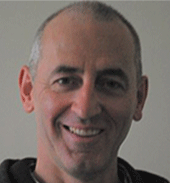Yes, pain is really all in your head
Here's a great article on pain and the brain science behind the latest discoveries which appeared in the New Zealand Listener and is part of a growing awareness around pain mechanisms in the public domain. The article includes a piece on the neuroscientist V Ramachandran.
A revolution in brain science has led to the discovery of new ways to stop persistent pain.
Ken Ng was 12 when he had his left leg amputated below the knee to stop the spread of bone cancer. It was the start of a long journey of pain. Phantom sensations from his amputated limb haunted him as a teenager, including stabbing sensations and a vice-like constriction around his stump. It got worse when he moved to Wellington to begin studying for his law degree. By 2009, the sensations flooding in from his absent limb were consuming him.

Each day he downed a succession of prescription painkillers – codeine, tramadol, Neurofen and Voltaren. “I couldn’t really study any more, I couldn’t sit my exams. It made me introverted, I didn’t want anything to do with people. I wasn’t eating, I stopped going to lectures and the tramadol was making me hallucinate.” Ng sought help from his GP, who referred him to Capital & Coast District Health Board’s pain clinic. Luckily for Ng, the clinic had just begun to offer a simple but revolutionary new therapy, which recognises that some types of chronic pain are caused not by tissue damage but by changes in the wiring of the brain. Ng started his treatment with two weeks of computer exercises looking at pictures of right and left legs, and then began mirror therapy.
Ng’s occupational therapist, Maria Polaczuk, seated him with a large mirror positioned upright between his legs so it reflected his whole right leg. “All I could see was two bare normal legs. I massaged my right foot with my hands, manipulated it up and down. I was getting a sense of what a foot felt like.” As he looked at this reflected whole leg in the mirror, where usually he would see an amputated limb, something strange started to happen. “The tingling painful sensation in my stump started to fade and become less prominent.”
After two weeks of mirror exercises, four times a day, the phantom pain disappeared altogether. Now 22, Ng has been able to stop taking painkillers. He has had one brief attack of phantom pain, after a period of stress, but apart from that he experiences only the more routine discomfort of pressure on his stump from his prosthesis. Mirror therapy is one byproduct of a great leap forward in science’s understanding of pain and how it is manufactured in the human brain.
A decade and a half of brain imaging has found that although tissue damage is very important in determining pain, it is not the only ingredient. When you injure part of your body, an alarm goes off in the central nervous system in the spinal cord and brain. The brain constructs the pain experience by assessing not just the injury but also thoughts, feelings, context, beliefs, expectations, past experiences and genetics. Any of these factors can turn the volume up or down on pain. These other factors can also influence whether the brain’s pain system becomes stuck on high alert in the long term, even when an initial injury has subsided. Some 700,000 New Zealanders, or one in six, suffer from chronic pain. This is pain that has lasted for three months or more; arthritis and back pain are two common types.
Click here for more:http://www.listener.co.nz/lifestyle/health/no-pain-big-gain/





 Ged Sumner
Ged Sumner